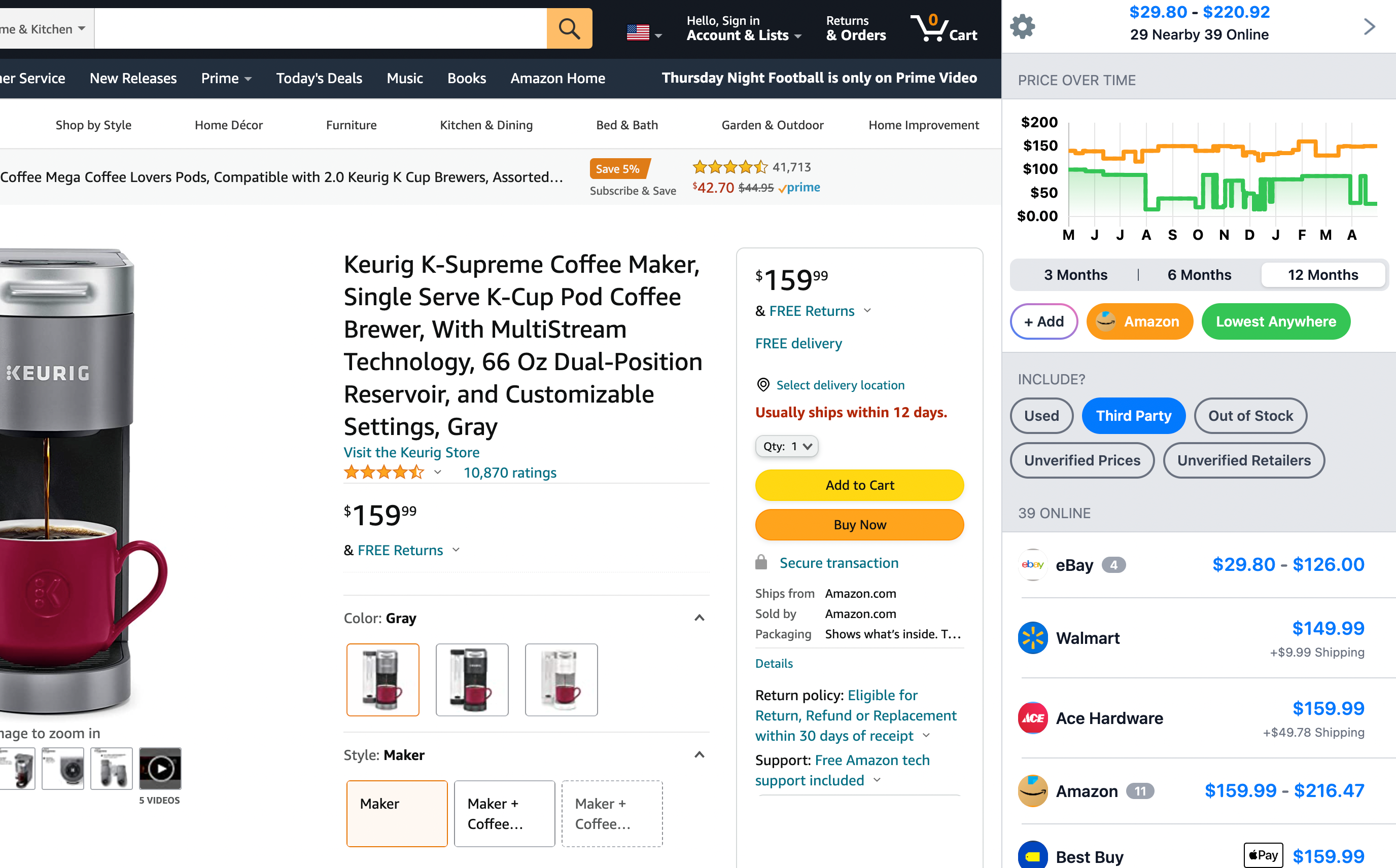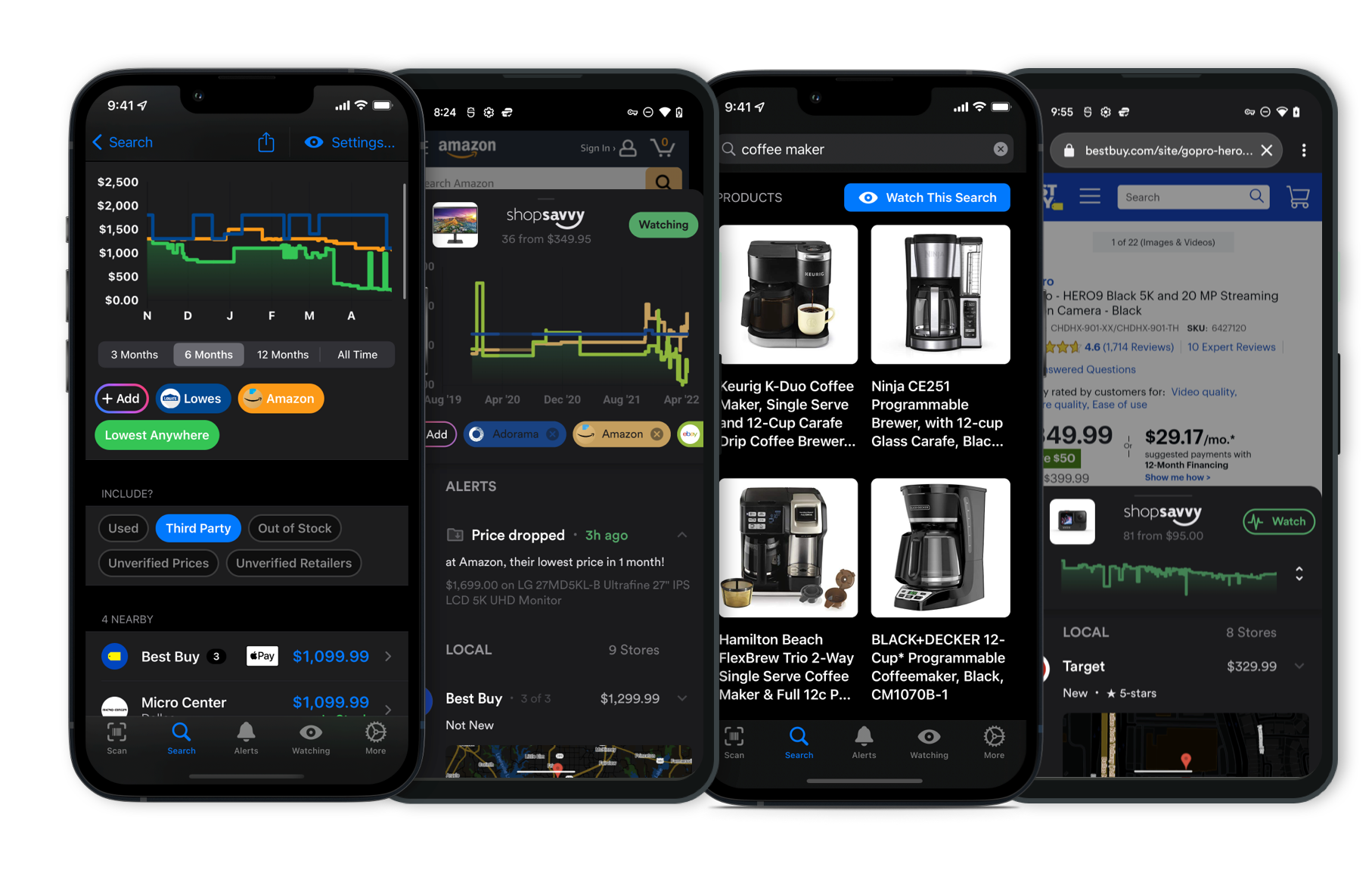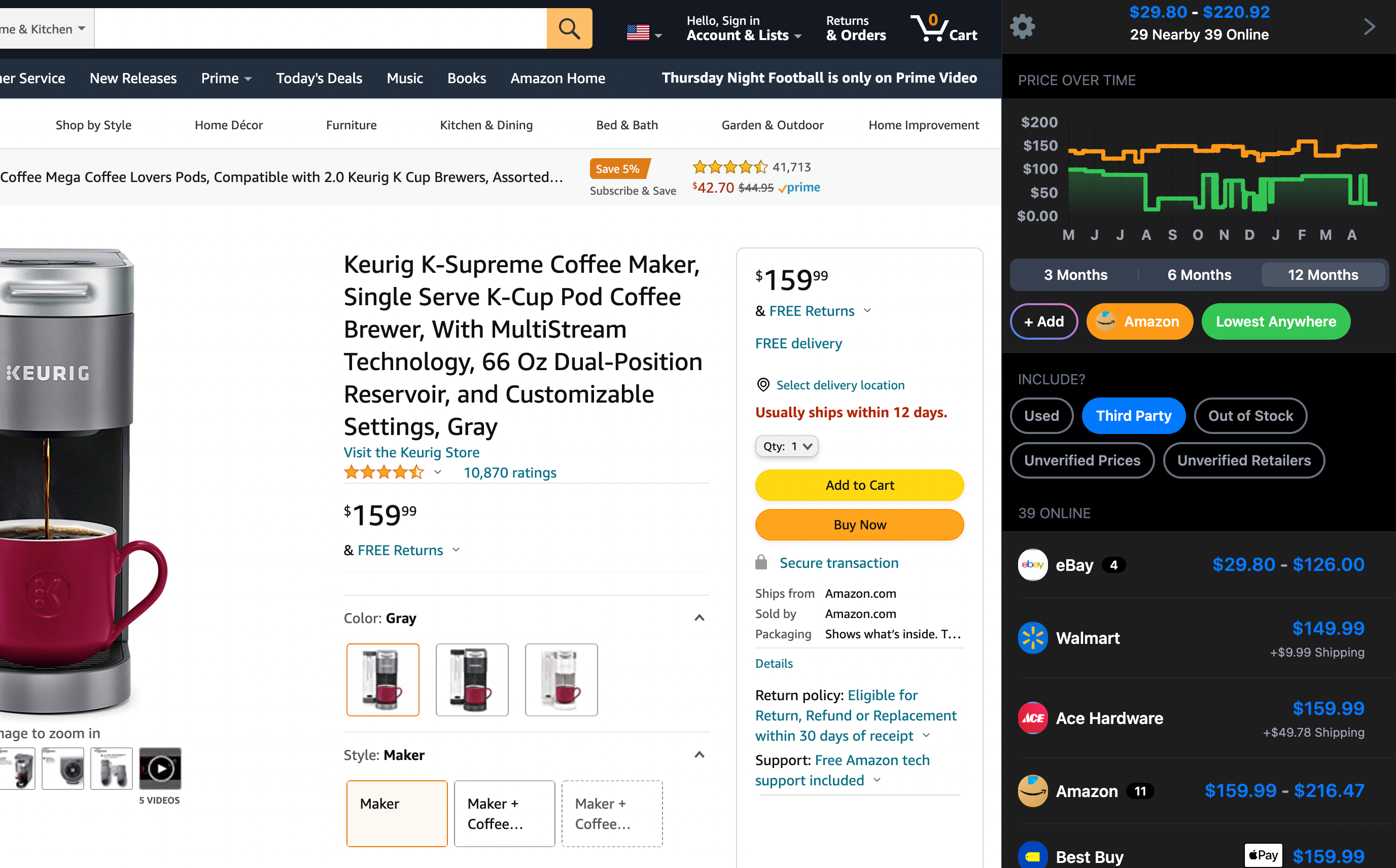Latest Answers for the Product (Page 169)
The ASUS ROG Rapture GT-BE98 PRO is pretty impressive when it comes to network speeds and connectivity options. Here's a breakdown of what it offers based on the manufacturer's description:
- 10GbE WAN/LAN port
- 2.5GbE WAN/LAN port
- Three 2.5GbE LAN ports
- One 10GbE gaming LAN port
- One 1GbE LAN port
- USB 3.2 Gen 1 port
- USB 2.0 port
These ports mean you can hook it up in various ways, ensuring your devices get low latency and high throughput. Stuff like the 10GbE gaming LAN port is designed to make sure your online games run smoothly without lag. According to our research, people have found it very dependable for keeping high-speed connections, even with many gadgets hooked up.
It also supports WiFi 6E, the latest WiFi tech, which means faster wireless speeds and better performance in congested areas. The manufacturer says it can hit combined speeds up to 10.8 Gbps with its tri-band setup, including the new 6GHz band that has less interference than the older 2.4GHz and 5GHz bands.
So, in a nutshell, if you need a router that can handle lots of devices, gaming, streaming, and pretty much anything else you throw at it, the ASUS ROG Rapture GT-BE98 PRO won't disappoint. According to our research, it's a solid investment for those wanting a future-proof network setup.
The ASUS ROG Rapture GT-BE98 PRO router does a great job with range. According to the manufacturer, it can cover up to 6,000 square feet, which is solid for even larger homes.
This is thanks to its high-gain antennas and Wi-Fi 6E tech, which helps it maintain strong data transfer rates over longer distances than older Wi-Fi versions.
Based on our research, it seems to perform well in both single-story and multi-story homes, keeping a good signal strength across different floors and rooms.
That said, your mileage might vary a bit depending on your home's layout, wall materials, and other stuff like that.
But overall, it should cover the needs of most people just fine.
The NETGEAR Nighthawk RS700S comes with a good mix of ports. Here’s what the manufacturer lists:
-
One 10 Gigabit Multi-Gig Ethernet port (WAN/LAN): This can be used as either a WAN port to connect to your internet service provider or a LAN port to hook up a device in your network.
-
Four Gigabit Ethernet LAN ports: These are your standard LAN ports for connecting things like gaming consoles, smart TVs, or desktop computers directly to the router for a solid wired connection.
-
Two USB 3.0 ports: These let you plug in external storage like USB drives, so you can share files across your network or set up a network-attached storage (NAS) system.
So, whether you need fast internet, reliable connections for multiple devices, or more storage, this router has you covered.
For even more details, you might want to check out the manufacturer's site or the product manual.
The NETGEAR Nighthawk RS700S Tri-Band WiFi 7 Router is designed to handle up to 200 devices at the same time, according to the manufacturer's description. This is thanks to its WiFi 7 technology, which uses 320MHz channels and multi-link operation to give you lower latency and better performance with many connections running simultaneously.
From our research, it seems like the RS700S mostly lives up to this claim. Some folks have mentioned they managed around 150 smart devices, including switches, outlets, cameras, and bulbs, with only a few minor hiccups on the 2.4GHz band.
Overall, if you've got a bunch of connected devices, whether at home or in a small business, the NETGEAR Nighthawk RS700S seems like a solid pick. Its advanced tech helps keep everything running smoothly.
Yep, the NETGEAR Nighthawk RS700S does support WiFi 7. The manufacturer says it can cover up to 3,500 square feet.
But, according to our research, results might be hit or miss. A few folks have mentioned that it didn't cover their 2,700 sq. ft. house as well as they'd hoped. So, while the specs sound promising, keep in mind that performance can vary based on your home's layout and possible signal obstacles.
WiFi 7 is definitely a big jump from previous versions, offering faster speeds and handling more devices smoothly. The RS700S taps into these benefits, making it great for things like streaming and gaming.
Plus, it comes with advanced security and device management features, which tech enthusiasts might appreciate.
If you're eyeing this router for its speed and coverage, just remember that real-world performance can vary. Home construction, the number of connected devices, and other factors play a role.
All in all, it's a solid pick for future-proofing your home network, but as with any wireless tech, your mileage may vary.
The NETGEAR Nighthawk RS700S really delivers when it comes to WiFi speeds. According to the manufacturer's product description, this router uses Tri-Band WiFi 7, which means the speeds are a notch above older WiFi standards. The combined WiFi speeds can reach up to 19Gbps across the 2.4GHz, 5GHz, and 6GHz bands. This should give you fast downloads, smooth streaming, and reliable connections even when multiple devices are hooked up at the same time.
Our research shows that people often highlight how well it handles high-speed internet in bigger homes. It covers around 3,500 sq. ft., so you can expect strong signals and fast speeds all over your house. This means you shouldn't have trouble with buffering when streaming 4K/8K content or lag during gaming.
But keep in mind, the actual speeds can vary depending on things like your internet service provider, the layout of your house, and how many devices you have connected. In some cases, especially in really large homes or ones with dense walls, the speeds might drop a bit in the areas farthest from the router.
If that happens, adding a mesh WiFi system like something from the NETGEAR Orbi series can help extend the coverage and keep those speeds up.
So, the RS700S is built for top-notch WiFi speeds up to 19Gbps and good coverage, but you might need some mesh extenders if you want to maintain those speeds in a bigger or more complex home setup.
The NETGEAR Nighthawk RS700S has a solid reputation for its WiFi range and handling multiple devices. Based on the manufacturer's description, it's capable of supporting up to 200 devices spread over its three bands—2.4GHz, 5GHz, and 6GHz. Specifically, about 150 devices can connect on the 5GHz and 6GHz bands combined, while roughly 50 can use the 2.4GHz band. This helps manage congestion and keep things running smoothly across the different bands.
From what we've found, the RS700S does a great job managing lots of devices on the 5GHz and 6GHz bands without much trouble. But when it comes to the 2.4GHz band, especially with smart home devices, performance might dip if you connect more than 50 devices. This could lead to slower speeds and some dropped connections.
As for how far the signal reaches, the manufacturer says the RS700S has extensive coverage, making it a good fit for large homes and even some outdoor spaces. This broad range is mainly thanks to its beamforming tech and strong amplifiers, which boost your WiFi signal's reach.
So, if you need a router that can handle a lot of devices over a wide area, the Nighthawk RS700S is a good pick. Just keep an eye on how many gadgets you're hooking up to the 2.4GHz band.
Yeah, the ASUS RT-BE96U is definitely on the expensive side, but it packs some of the newest tech that could make it worth it if you're wanting to stay ahead.
It supports WiFi 7 (802.11be), which means it can handle faster speeds and lower latency, especially with its tri-band setup that includes a 6GHz band. The manufacturer says it can push a 320MHz bandwidth and 4096-QAM modulation, which basically means it can move a lot of data quickly.
From what we've seen, professional reviewers are pretty impressed with how it performs. Dong Knows Tech mentioned it's one of the first true WiFi 7 routers out there and highlights its new 2x2 connection for a big performance boost.
RTINGS and Tom's Guide also note that it uses the 6GHz band well for great speeds and overall performance.
That said, WiFi 7 is still pretty new, so the full benefits might not be obvious until more devices support it. Also, some feedback from our research suggests there might be some firmware bugs, so it could be worth waiting for more stable updates to get the most out of it.
All in all, if you're looking to future-proof your network and don't mind the investment, the ASUS RT-BE96U could be a solid choice. Just keep in mind you might run into some early adoption quirks.
Setting up the ASUS RT-BE96U is pretty easy. You don't need to be a tech whiz to get it going. The manufacturer claims it has an intuitive setup process using the ASUS Router app.
This app walks you through everything step-by-step, from connecting cables to configuring your network settings. Most people can get everything up and running within 15-30 minutes. And if you prefer not to use the app, there's a web-based setup option too, which allows for more in-depth customization.
According to our research, many folks had a positive experience with the setup. For instance, someone mentioned that upgrading from their older ASUS model (the AX86U) was seamless, and they didn't experience any drop in coverage in their 2,500 square foot home when the router was placed centrally.
This shows how well it performs in similar-sized homes. The router also supports AiMesh, which lets you extend your Wi-Fi coverage by adding other compatible ASUS routers.
This can be a lifesaver if you're dealing with dead zones or weak signals in certain parts of your home.
Overall, the ASUS RT-BE96U makes setting up your home network pretty straightforward. With the app-guided setup, strong performance, and the option for extended coverage via AiMesh, it's a solid choice for a modern home network.
The ASUS RT-BE96U has some cool features, but there are mixed feelings about its reliability, especially when it comes to WiFi disconnecting. The manufacturer claims it supports advanced technologies like MU-MIMO and 4096 QAM, which should help it manage multiple devices better, like your phones, tablets, gaming consoles, and smart TVs, all at once.
That said, in theory, these features should give you a smoother and more stable connection for each device on your network.
Professional reviews generally give it a thumbs up for handling demanding online activities and keeping strong performance across its multiple bands, which is great if you have a lot of heavy network use.
But according to our research, the real-world performance can be hit or miss. Some folks have run into issues with the WiFi disconnecting and needing to reset the router often. These issues seem to come from software bugs, and keeping the firmware updated is usually necessary to keep things stable.
So, while the ASUS RT-BE96U has a lot going for it on paper, you might need to do some hands-on management to keep everything running smoothly.
 Download ShopSavvy App
Download ShopSavvy AppCompare prices for anything in real-time, set price alerts, watch for deals by keyword, and much more
 Install ShopSavvy Browser Extension
Install ShopSavvy Browser ExtensionCompare and track prices automatically while you shop online at thousands of websites.
Footer 1
Published
Subscribe for Updates
Get the latest news, and updates on ShopSavvy. You'll be glad you did!




